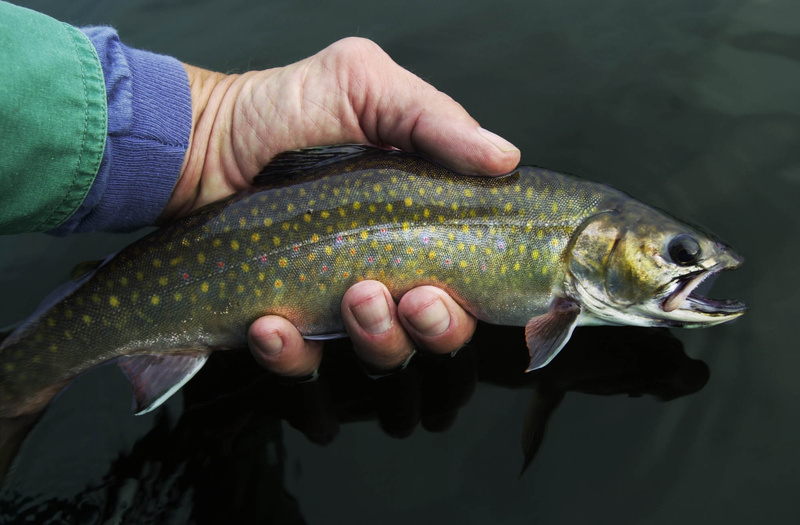Q: How do you release a fish?
A: You read that right. This is about what happens after you catch a fish. After all, what good is catch and release if the fish isn’t going to survive the encounter? We want to give the fish a decent chance of swimming away from the boat.
Surprise. It’s about planning. Anglers need to “have a thought in advance about ‘What am I going to do?”‘ says fishing guide Don Kleiner of Maine Outdoors in Union. That’s because time is paramount. The longer the fish is out of the water and the more it thrashes about, the worse its condition will be by the time it returns to the water.
To cut down on that, Don says you need to know what to do when you pull it out of the water, remove the hook and return the fish to the water quickly.
Should there be a designated de-hooker? Well, that’s not a bad idea. When Don guides, he is the only one who handles the fish. He knows he can give the fish a fighting chance of being caught again by his next client. But he’s not opposed to teaching someone. And letting them gain the experience needed to do this right.
Wait. Can we get a photo?
Don says that’s fine. You’re going to need proof that this one didn’t get away. But get the camera ready while reeling in the fish, and be ready to shoot. It’s part of the plan so you can do this quickly. While the photo and the memory can last forever, the fish won’t.
When you land the fish, you need to gain control of it. Grab the hook or lure or fly and then grab the fish. Now this can be a little tricky because some species have defenses others don’t — like teeth and spiny fins. But find a safe handhold. “We don’t want them flopping around in the dirt or flopping around in the bottom of the boat,” Don says. You need to gain control without squeezing them until their eyes pop out.
What about gear? Have any gadgets to help do this quickly?
“Needle-nose pliers make life tremendously easier,” Don says about removing hooks. He always keeps a pair on his belt. It’s fine to keep pliers in your tackle box. Just be able to reach them quickly.
A lot of people want to wear a glove when handling a fish. That’s fine, but put it on while reeling in the fish. Don’t waste time fishing for the glove and putting it on while the fish is flopping at your feet.
Nets help control the fish as you bring it into the boat. But Don prefers the newer nets made of rubber as opposed to nylon. He says hooks don’t stick in them, and it seems like the rubber doesn’t strip the slime off the fish. Yeah, you want to keep the fish slimy. It’s the fish’s protection when it’s out of the water. Losing that slime makes it more vulnerable to infection.
“If you’re going to handle a lot of fish, keep a rag in the boat to clean your hand off with,” he says. Yeah, there’s that slime. But there’s also concern about passing disease to the next fish you handle.
OK, hook is out, and it’s time to release.
No, don’t toss it into the water. Ease the fish back in. Don says he reaches into the water with fish in hand and moves it back and forth. This action moves water over the gills and helps revive the fish. At this point the fish is pretty worn and out of it. You’re not the only predator looking for it. Don’s approach gives it a chance to make a clean getaway.
“Basically the fish will tell me when he’s ready to go,” says Don. Don’t expect a thank you. It will swim out of your hand when it’s ready.
The key is to be prepared – act like you expect to catch the fish. Reel it in, pose for the camera, remove the hook and ease it back into the water as quickly as you can. Quick and gentle action increase the fish’s chance of survival.
Carl Natale is a Registered Maine Sea Kayak Guide, hiker and content producer for MaineOutdoorJournal.com. Send questions to:
cvn@mainetoday.com
Send questions/comments to the editors.



Success. Please wait for the page to reload. If the page does not reload within 5 seconds, please refresh the page.
Enter your email and password to access comments.
Hi, to comment on stories you must . This profile is in addition to your subscription and website login.
Already have a commenting profile? .
Invalid username/password.
Please check your email to confirm and complete your registration.
Only subscribers are eligible to post comments. Please subscribe or login first for digital access. Here’s why.
Use the form below to reset your password. When you've submitted your account email, we will send an email with a reset code.